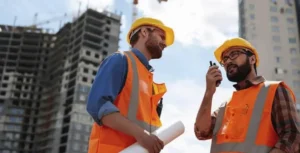
California, known for its diverse population and thriving industries, welcomes workers from various cultural and linguistic backgrounds. With this multicultural workforce comes the challenge of ensuring effective safety training that transcends language barriers. Proper safety training is not just a legal requirement but also a moral obligation to protect workers and prevent accidents. We will delve into the significance of overcoming language barriers in safety training for multilingual workplaces in California and explore practical strategies to achieve better safety outcomes.
1.-The Importance of Multilingual Safety Training in California.
Effective safety training is a vital component of workplace safety, but its impact can be diminished when language barriers come into play. In multilingual workplaces, a lack of comprehension can lead to misunderstandings, misinterpretations, and increased safety risks. As California employers, it is our responsibility to provide training that is accessible and understandable to all employees.
2.- Legal Requirements and Compliance.
In California, labor laws mandate that employers offer safety training in a language that employees can understand. Compliance with these regulations not only ensures legal adherence but also reflects a commitment to fostering an inclusive and safe work environment for everyone.
3.-Identifying Language Needs in the Workplace.
Understanding the languages spoken by the workforce is the first step towards effective multilingual safety training. We outline methods for conducting language assessments and recognizing the linguistic needs of employees:
- Summative assessment.– knowing what you know.
- Formative assessment.– knowing what you don’t know.
- Diagnostic assessment.- knowing if there’s a gap.
- Benchmarking assessment.- knowing how you compare.
- Continual assessment.- knowing how you’re tracking.
4.- Tailoring Safety Training Materials for Linguistic Diversity.
To bridge the language gap, employers must create safety training materials in languages commonly spoken within the workforce. At Reliance Safety Consultants, we recognize that a one-size-fits-all approach to safety training is insufficient. To bridge the language gap, we have developed comprehensive safety training materials in both Spanish and English, ensuring that employees can access vital safety information in their native language.
5.-Utilizing Technology for Enhanced Multilingual Training.
Technology can be a powerful ally in overcoming language barriers. Our commitment to overcoming language barriers extends beyond traditional methods. We utilize cutting-edge e-learning platforms and interactive tools to deliver engaging and accessible safety training. Through technology, we can make safety education more engaging and effective for all participants.
6.- Emphasizing Visual Communication.
Visual aids play a vital role in breaking down language barriers. We emphasize the importance of incorporating images, diagrams, and symbols to supplement verbal communication during safety training sessions. In addition, we have developed for several clients audiovisual material just using icons and animations with no language on them describing safety procedures.
7.-Providing Professional Interpreters and Translators.
For complex training sessions or critical safety briefings, our safety management company provides the option to engage professional interpreters and translators. This ensures that all employees receive precise safety information and can ask questions with clarity and confidence.
8.- Integrating Language and Cultural Competence Training.
Apart from safety training, employers can also offer language and cultural competence training programs to foster a more inclusive work environment and improve overall communication among employees.
9.- Evaluating and Improving Multilingual Safety Training.
Continuously seeking feedback from employees about the effectiveness of multilingual safety training is essential. We discuss the significance of regular evaluations to identify areas for improvement and make necessary adjustments.
Ensuring worker safety in California’s multilingual workplaces requires proactive efforts to overcome language barriers. By recognizing the diversity of their workforce, employers can tailor safety training to meet the needs of all employees effectively. Embracing multilingual safety training not only enhances workplace safety but also fosters a stronger sense of community and inclusivity among workers. At Reliance Safety Consultants, we understand the significance of overcoming these challenges and have developed Safety Training programs available in both Spanish and English. Together, let’s build a workplace where safety knows no language barriers, and every employee can thrive.
Our team is here to support you in maintaining a culture of safety and ensuring the well-being of your workforce:

Indoor Heat Safety: Compliance and Prevention in California Workplaces
In a proactive move towards ensuring workplace safety, the California Occupational Safety and Health Standards Board has introduced a new regulation, Section 3396, under Title

Protecting Outdoor Workers from Heat Illness in California
As temperatures soar in California, outdoor workers face increased risks of heat illness. Cal/OSHA’s recent reminder underscores the importance of employers taking proactive measures to

Safeguarding Your Business: The Importance of Compliance with Cal/OSHA Regulations
In the bustling streets of San Francisco, tragedy struck on September 28, 2023, when a routine construction project turned fatal. D’Arcy & Harty Construction, Inc.,


